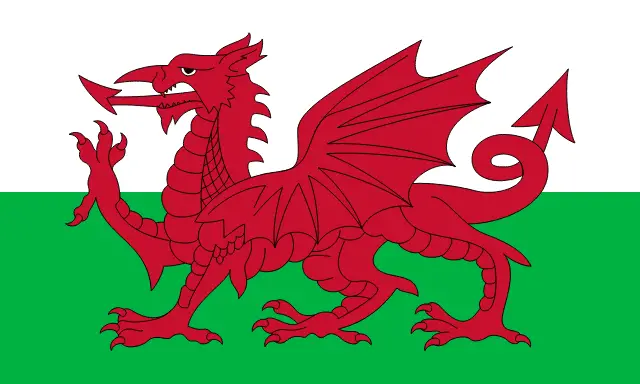Country Information
| Sovereign State | No (Part of the United Kingdom) |
| Country Codes | GB-WLS |
| Official Name | Wales |
| Continent | Europe |
| Capital | Cardiff |
| Government Type | Devolved Parliamentary Legislature within a Constitutional Monarchy |
| Currency | Pound Sterling (GBP) |
| Calling Code | +44 |
| Member Of | Under the United Kingdom: United Nations, Commonwealth of Nations, NATO, G7, G20, World Trade Organization, Organisation for Economic Co-operation and Development, Interpol |
| Population | Approximately 3.1 million |
| Total Area | 20,779 square kilometers |
| Highest Point | Snowdon (Yr Wyddfa) (1,085 meters, 3,560 feet) |
| Lowest Point | Sea Level (0 meters, 0 feet) |
| GDP Per Capita | $30,546 (As part of the UK) |
| Life Expectancy | 81.1 years (As part of the UK) |
| Internet TLD | .uk (shared with the United Kingdom) |
Welsh National Anthem
Hen Wlad Fy Nhadau (Old Land of My Fathers)
The land of my fathers is dear to me,
Country of poets and singers, celebrities indeed:
Its brave warriors, fine patriots,
Shed their blood for freedom.
Flags of Neighboring Countries

History of the Welsh Flag
The flag of Wales, known as “Y Ddraig Goch” (The Red Dragon), is one of the most striking and recognizable flags, featuring a red dragon on a green and white field. The history of the Welsh flag is a blend of myth, legend, and historical fact, tracing back to the Roman era.
The red dragon itself is an ancient symbol, believed to have been used by the Romans during their occupation of Britain. This symbol was later adopted by Welsh kings and princes in their battle standards, the most notable being Cadwaladr, King of Gwynedd in the 7th century.
In Welsh mythology, the red dragon represents the Welsh people and their fierce spirit. It’s said to have fought an invading white dragon, symbolizing the Saxons, in a battle under the mountains of Snowdonia. The red dragon’s victory was seen as an omen of the coming greatness of the Welsh people.
The green and white colors of the flag’s background represent the Tudor colors. The Tudors, a Welsh dynasty, played a significant role in British history, with Henry VII taking the English throne after the Wars of the Roses. It wasn’t until 1959 that the flag was officially recognized by the British government as the national flag of Wales, making it one of the youngest flags in the UK’s history.
The Welsh flag is a source of immense pride and a symbol of Wales’ distinct cultural identity within the United Kingdom. Its use in sports, national events, and cultural celebrations is a testament to its significance for the Welsh people. The flag symbolizes resilience and a deep connection to a storied past, blending myth and history into a singular emblem of Welsh heritage.

